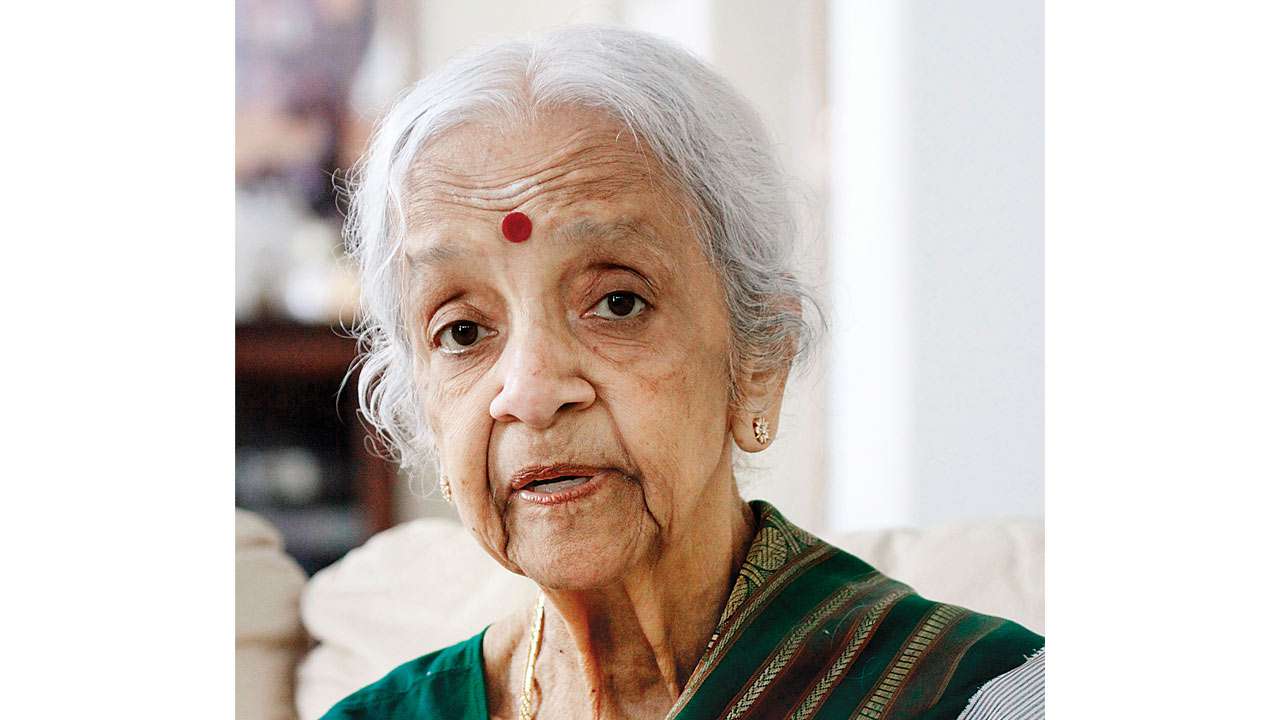
I remember the day my mother took me walking from our flat in Santacruz, Mumbai, to her childhood friend’s home close by. I was 12 and miserable, having just lost all my friends in being shifted from my comfort zone school in Madras to a Mumbai convent.
The girl with two plaits and butterfly bows who opened the door had a smile as welcoming as her mother’s hug. As young Viji and I began to play in the verandah, I heard the tanpura anchoring a voice that lifted the clouds. I didn’t know that I was listening to Lakshmi Shankar, an eminent Hindustani musician. But I felt that I could be happy again, the new city may not be so alien after all.
On the way home my mother told me that Lakshmi was the daughter of family friend Harijan Sastri (the prefix to his name conferred by the Mahatma on the man who edited his “Harijan” journal). With wife Visalakshi, Sastri belonged to a group of intellectuals including statesman Rajaji and my grandfather, cult writer Kalki Krishnamurti. They held intense discussions on wide-ranging topics. Mother recalled a meeting on the moonlit Mahabalipuram beach, where khadi-clad Visalakshi expressed strong views on satyagraha, peppered with songs of freedom.
My mother said, “When she got Lakshmi trained in Bharatanatyam, Visalakshi Amma broke the ban on women from privileged classes learning music and dance. Lakshmi could also sing Carnatic music well. My father, a redoubtable art critic, hailed her as a rising star. And indeed Lakshmi’s talent and Visalakshi’s courage inspired my parents into making me learn the “immoral” art form.”
Years later, I realised that the woman I had seen as a family friend was an artist extraordinaire, though paradoxically, she seemed to have never hit the spotlight. In her ‘Poignant Song’ (Harper Collins, 2019), biographer Kavita Das too describes Lakshmi Shankar as “one whose voice reached across continents and cultures, yet who remains largely unsung”.
The biography does not avoid eulogy and hero worship prompted by the long standing empathy of personal bonding. With its large cast of characters from many parts of the world who add considerable spice to the different sequences, the book cries out for a glossary of names. However, the indeterminate tone of not being able to identify the intended audience as the initiated or the uninitiated, Indian or western, is offset by sincere research and easy style. The introduction by sitar artiste Anoushka Shankar (Lakshmi Shankar’s niece) adds warmth and intimacy.
The narrative opens at a vibrant moment: Lakshmi at a London screening of Richard Attenborough’s classic film ‘Gandhi’, listening to her own voice in the back score raised in alaap and song, bringing to life the glory and tragedy of the Mahatma’s life in a spectacular international production. A goosebump experience for the quiet, publicity-shy artist.
“Poignant Song” then flashes back to establish Lakshmi’s roots in Tamil Nadu, before moving to other regions with father’s work commitments, and Lakshmi’s own radical step of joining contemporary dance celebrity Uday Shankar’s Almora Institute as repertory artist. A drastic cultural shift, not only in encountering other dance/music genres, but unknown languages and customs. Marriage at age fifteen to twenty-one years older Rajendra Shankar, (brother to Uday Shankar and Ravi Shankar, later sitar maestro) ensured freedom to continue her career as a performing artiste, in the era when husbands insisted that wives remain merely homemakers.
The financial collapse of the Almora experiment directs the couple to Bombay filmdom - Rajendra as scriptwriter, Lakshmi as actor and playback singer. Fame (but not commercial success) arrives with innovative ballets (Nehru’s Discovery of India, Tagore’s Samanya Kshati) where Lakshmi’s dancing amazes as much as Ravi Shankar’s original score. But pleurisy blocks Lakshmi’s progress and eventually allows only the pursuit of music. Daringly, this Carnatic vocalist opts to learn Hindustani music and perseveres until she wins accolades from doughty northern critics. She plays a significant role in introducing Hindustani vocal music to the west, in concerts, and under Ravi Shankar’s baton.
The most intriguing chapters showcase Lakshmi’s versatility in adapting to diverse cross-cultural genres. With Indian orchestral music (Festival from India) masterminded by Ravi Shankar, and the Shankar Family Album produced by Beatle George Harrison. The megascale Dark Horse tour has Lakshmi doing what millions would have died for- singing live with the Beatle before humongous, frenzied crowds she had never seen before.
Das shows how sorrows – particularly losing daughter Viji to cancer - both clogged and released Lakshmi’s creativity, and how a deep spirituality nourished her music and her soul till the very end. She does more: brings a forgotten era back into the present when east-west cross-cultural encounters in music were rare, often meaningful, not always successful, but always motivated by creativity, not commerce.
The author is a playwright, theatre director, musician and journalist